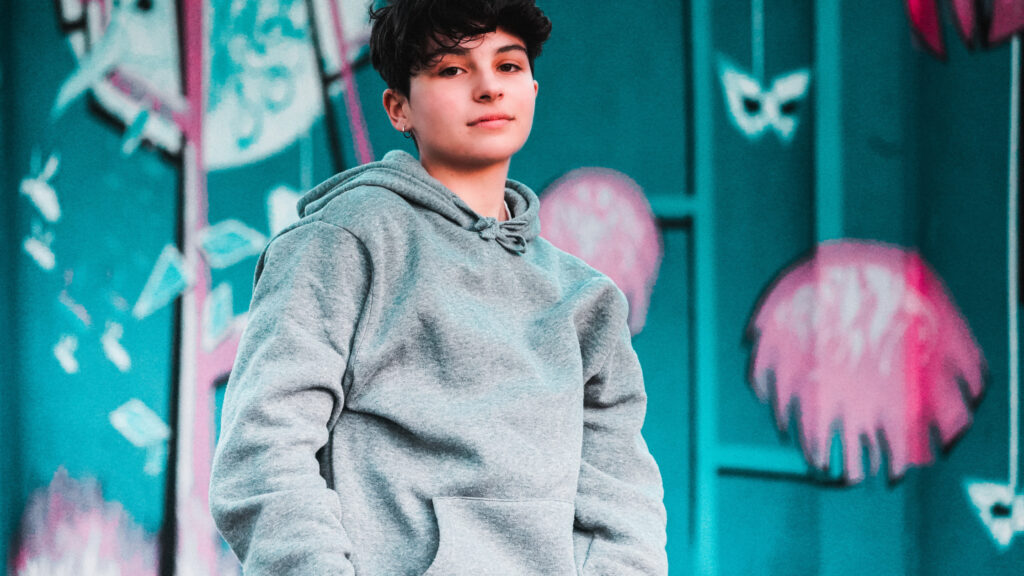What is Performance Anxiety?
Have you ever stood in front of an audience and noticed your stomach growing upset, palms sweating, and thoughts racing from one worry to another?
If so, then you were likely experiencing what is called, performance anxiety. This is a type of anxiety that takes place when a person feels fearful or overly nervous when performing a certain task.
Performance anxiety is connected to the fight or flight response due to the person experiencing stress in association with a task. The response causes the person to attack inward. The attack can be seen as a person thinking that others will mock them or that they will fail at a given task.
For some, the task is found in feeling that all the eyes are on them as they present their material in front of the classroom. While for others it can be seen when attempting to perform in the bedroom.
The task performed is usually one that the person is strongly connected to it. As such, the person may find themselves overly focused on how they will be perceived.
To further understand performance anxiety, let’s consider Bob as a case example. Bob is a student who has a strong desire to follow in his father’s footsteps and one day become a professor. During a recent meeting with a teacher in his school, Bob found himself vulnerable and struggling to get his words out. After the meeting, he felt humiliated and judged.
In the example above, you can pinpoint that Bob’s fight and flight response was activated by the meeting with his teacher. His anxiety came out in the form of stress, feeling vulnerable, struggling to get his words out, feeling judged, and being humiliated. Overall, he struggled to perform.
Kids and performance anxiety?
Performance anxiety can show up in kids, tweens, and teens just like in adults. In this reading, you are able to reflect on Bob. The student who experiences performance anxiety. In the reading, you are able to reflect on the performance anxiety symptoms that Bob is experiencing.
Common ways that kids struggle with performance anxiety include:
- When taking exams in school. This is typically known as test anxiety.
- Feeling pain in their stomach is also known as the “butterflies”.
- Experiencing physical symptoms such as rapid heart rate, muscle tension, paralysis, or cold sweats.
- In sports. For instance, when they are given the ball and feel that they cannot perform under the pressure.
- During social interactions. Such as, when they are with friends and feel that they have to show up in certain ways. The feeling grows and shifts to anxiety. This often leads to avoidance or experiencing anxiety-related symptoms.
- Feeling emotional and even physical pressure before playing a game.
Common symptoms of performance anxiety?
People that struggle with performance anxiety often experience symptoms that directly limit their ability to show up or fully complete activities. One of the most common examples is that of a student taking a test. The student studies and does their best to prepare. On the day of the test, they show up to their classroom with anxiety that causes their stomach to hurt. The student starts the test and notices that their mind becomes distracted or completely blank. Another symptom of anxiety. Days later the student receives the result of a C. The grade of the C in no way relates to their intelligence. The grade of C connects to the impact of performance anxiety.
Common symptoms of performance anxiety:
- Problems focusing and concentrating.
- Mind going blank.
- Muscle tension.
- Stomachache.
- Sweaty palms.
- Avoidance of certain activities.
- Struggle to complete certain activities.
How To Manage Performance Anxiety
Managing performance anxiety starts with understanding why it makes you feel the way that you feel.
The feelings that accompany performance anxiety are commonly seen when a person finds themselves in a situation of stress due to their desire to present themselves in a specific manner. The stress takes place due to thoughts of how the task being performed will lead to feeling humiliated or rejected.
Consider, Bob. A 15-year-old student has an upcoming presentation in front of his class. Bob finds himself feeling overly worried before the date of the presentation. His sleep is irregular, his thoughts jump from one failed attempt to another, and even the thought of standing in front of the class leads to intense pressure in his chest. During the date of the presentation, Bob, finds himself feeling a knot in his stomach, he struggles to remember what he studied and exits the presentation halfway through.
The case above gives you a clear example of the feelings you may experience because of performance anxiety. As you reflect on the reading, know that there are ample ways to address performance anxiety. A great start is reaching out to a professional clinician near you.
Santos Counseling PLLC has a team of clinicians that can help. CLICK HERE to check out the team page. You’ll have a chance to read more about them so that you can find a good fit.
How Counseling Can Help with Performance Anxiety?
Working with a counselor provides a safe and non-judgmental space that focuses on identifying the root of the issue, triggers that connect to it, and developing healthy coping skills aimed to build calmness and help you achieve your therapy goals.
People that struggle with performance anxiety often reach out to a counselor because of the following reasons:
- Feeling that they want to reach new goals but are held back because of their anxiety.
- Struggling to do well in school, work, or in relationships because of the anxiety.
- Noticing that your anxiety symptoms steer you away from doing the things that you want to do.
In a typical counseling session, the therapist will take time to hear your story and understand when and why anxiety is taking place in a manner that limits performance. You will be able to gain education and strategies that you can practice outside of the session. This way you are able to return to therapy. Updates sharing what is working and what’s not working. Over time you’ll gain the skills aimed to support you manage the anxiety and live your best life.
Books and resources that can help with performance anxiety?
The list below includes books and online courses that can help address symptoms connected to performance anxiety. The course and book are resources that can be supportive in addition to engaging with a professional counselor.
Manage Anxiety Without Medication is an online course that helps people understand their anxiety and develop clinically effective coping skills. The course is evergreen and fully inclusive of educational videos and worksheets that give you exercises aimed to manage anxiety. CLICK HERE to check out the course it is currently on sale.

The anxiety course includes powerful techniques that aim to help you build a clear state of mind, reduce anxiety, and find clarity in your life. The course is structured in a 4-week sequence. Each week you are given exercises and videos aimed to give you the tools to build confidence, calmness, and manage anxiety.
The next supportive tool that can help in addition to working with a counselor is the book the Power of Habits, CLICK HERE to check it out.
The Power of Habit: Why We Do What We Do in Life and Business is a book that pulls in research and guides you in the healthy change direction. This is a great book and resource for individuals wanting to create emotional change, self-improvement, and/or personal development. I also love the fact that this book is straightforward and not one that you have to read over and over just to understand the message.
Tips to help kids with performance anxiety?
As you parent, you want to help your child excel and grow in life. I understand that seeing them struggle with performance anxiety is not easy and you are here reading this because you are searching for supportive tools. Below are tips to practice when supporting your child with overcoming performance anxiety.
1. Create awareness when it comes to performance anxiety.
You have probably heard of a mood journal. It’s basically a journal that you use to write down your thoughts and feelings daily in order to later review on how your mood shifts from day to day or week to week.
To help your child build awareness with performance anxiety, try creating a daily reflection journal that focuses on performance anxiety. The basic purpose of it is to hone down on where your child specifically is struggling and the symptoms they are experiencing. Below are a few prompts that can be used when engaging in the journal activity. All your child needs is a blank notebook to get started.
Did I experience chest tightness, butterflies, nervousness, worry, sweaty palms, or cold feet today? If so, write down when and what was taking place.
2. Normalize performance anxiety.
It can be very challenging to feel that you are different or cannot do something. It’s almost natural for kids to compare themselves to their friends or classmates. To help your child with performance anxiety, try to help normalize it. Let them know that it’s okay to feel nervous. That it’s okay to start therapy or to work on oneself. Giving your child this level of compassion and kindness will directly help them feel ready and comfortable with engaging in constructive changes.
3. Develop ways to support your child.
To help your child with performance anxiety you can explore the option of working with a professional counselor, using self-help books, school social worker or psychologist, online mental health courses, or therapy journals.
The therapy journal below, Becoming Your Best Version is a writing and drawing journal for kids. It can be a very supportive tool to help your child with performance anxiety. CLICK HERE to learn more about the journal for your child.
Here is how the journal works:
For 30 days, your child will have a prompt to focus on. The prompts in the journal are writing or drawing assignments aimed to be FUN and INTERACTIVE in nature.
Prompts are great because they are therapeutic and directly help your child focus on emotional growth. At the bottom of each page, your child has a homework assignment. The homework assignments range from practicing affirmations to supportive acts of kindness.
The entire journal was created with one goal in mind:
To get your child to feel comfortable and confident with their feelings. A strong mindset equates to a successful future.
4. Teach your child affirmations.
The power of words is beyond measure. I’m sure that you have had an experience in which you gave yourself words of kindness or someone else gave you those words. During this moment, you probably felt uplifted. Empowered.
Affirmations can help your child learn to be their own healer.
Try using positive supportive words. Below are examples that you can play with:
- I am strong and beautiful.
- I can continue to move beyond this moment.
- Today has been a challenging day and for that, it is okay for me to stop and slow down.
- I trust myself.
5. Create supportive ways to lower anxiety symptoms.
The mental health symptoms that your child experiences can show up physically. Think about what happens to your body when you feel stressed? Some people when experiencing stress will feel the tension in their shoulders, an upset stomach, or a headache that causes difficulty when trying to concentrate.
To help your child with performance anxiety, you can encourage them to start yoga. Or together both can take on yoga. Yoga can help your child build strength in self-awareness. The practice of self-awareness helps to train the mind in understanding how thoughts, feelings, and day-to-day interactions impact a person.
For instance, yoga can help your child get to know their body and understand how a trigger such as walking into the classroom can lead to feeling anxious. The anxious feeling shows up as a headache. From this point, your child can use varying yoga practices to address the tension of the headache. One common practice is that of deep breathing.
Benefits of practicing yoga include:
- Stress reduction.
- Improvement in understanding what provokes bad feelings.
- Understanding and managing pain. For instance, your child can use yoga to help reduce the pain that comes with anxiety. Such as the tension in the head from a headache can be supported with the practice of yoga.
6. Checking in with your child supports performance anxiety.
Each day take 5 minutes to sit with your child. During this time check-in with your child on the following questions below. The purpose of the questions is to help identify triggers and reduce tension. In addition, it helps to build awareness which directly reduces tension.
Questions to explore with your child:
- What was the best part of your day?
- What was the most challenging thing about today?
- Who did you play with today?
- Which subject was easy or hard today?
7. Help your child get to know what they are going through.
Take time to consider the needs of your child and how those needs are impacted by performance anxiety. During this time work to identify if your child needs certain accommodations with specific activities. You can identify the answer by communicating with them.
Below are questions to explore:
- Do you feel that you need any specific help from your teacher when you start school or during a test?
- Do you think that going back to an in-person classroom will be challenging for you? If so, explore if the answer connects to performance anxiety.
- How can we (parents) help you at home with schoolwork, socialization, or recreational activities?
- What activities or tasks do you find challenging?
8. Counseling can be a great tool to support your child with performance anxiety.
Santos Counseling PLLC has a group of amazing counselors that help people learn that they can without a doubt live their best life. Counseling starts with an intake session that gives you space to ensure that the counselor you are working with is a good fit. You are able to share your story, ask questions, build a solid game plan focused on achieving objectives and goals. Over the course of sessions, you will start to learn creative ways to address stress.
9. Teach your child grounding exercises.
During this activity, the focus will be on picking up an object and using it to support reducing tension and anxiety symptoms. Below is the instruction for the grounding activity.
This can be anything from a ball on the floor or a pen next to you. Pick up the item and think about how it feels. Run your hands gently across the top and sides. Think about how it feels as you touch it. If you can squeeze it, then squeeze it. Do your best to play with it so that you are creating an experience.
Overall, the activity takes 1 to 2 minutes. Though it can be longer. Your child can practice the activity while waiting to take their test. This can help with test anxiety. Or your child can practice the activity in places like the sports field. Simply by picking up a ball or item near them and following the instructions shared.
10. Teach your child how to support themselves.
This exercise can be a fun and supportive grounding exercise. The goal is to focus on identifying categories based on topics or themes for the duration of two minutes. Use the last minute to create a supportive affirmation as you enter life.
An example of an affirmation is, “I am strong and fully capable of taking on what life gives me. and if I am not able to handle it at the moment, I will put it to the side and address it later.”
Examples for themes or topics include identifying animals with four legs, fast cars, destinations that are tropical, and more.
For more resources on managing anxiety follow the links below:
Supporting you in your journey of healing, recovering, and moving forward in life is our mission. The resources are hand-selected to ensure that you are provided with the very best tools to move you forward in your journey. Please note in full disclosure that these are affiliate links, meaning that a commission or incentive with links that you use. We truly appreciate your willingness and kindness in trusting our counseling practice.







